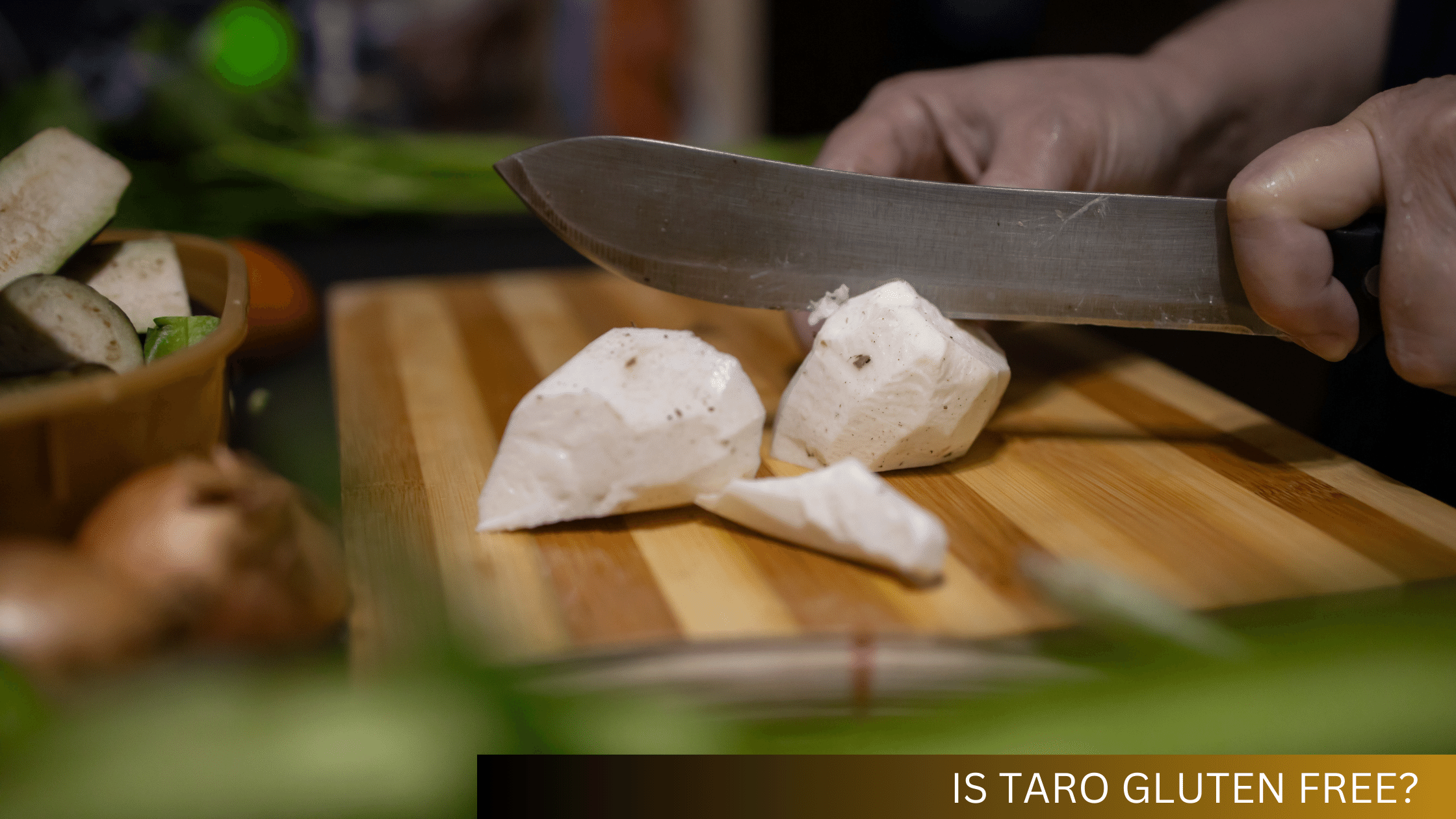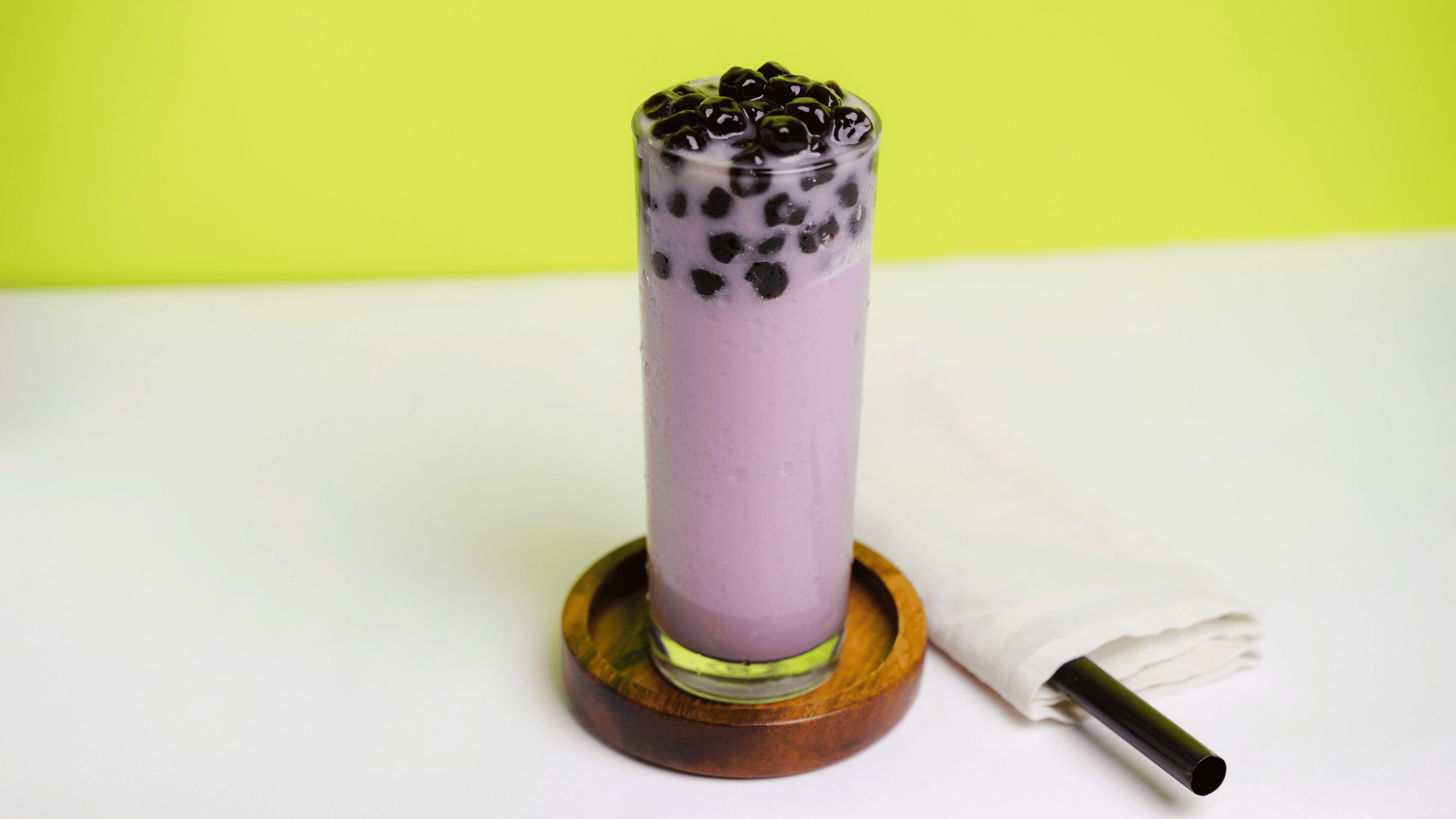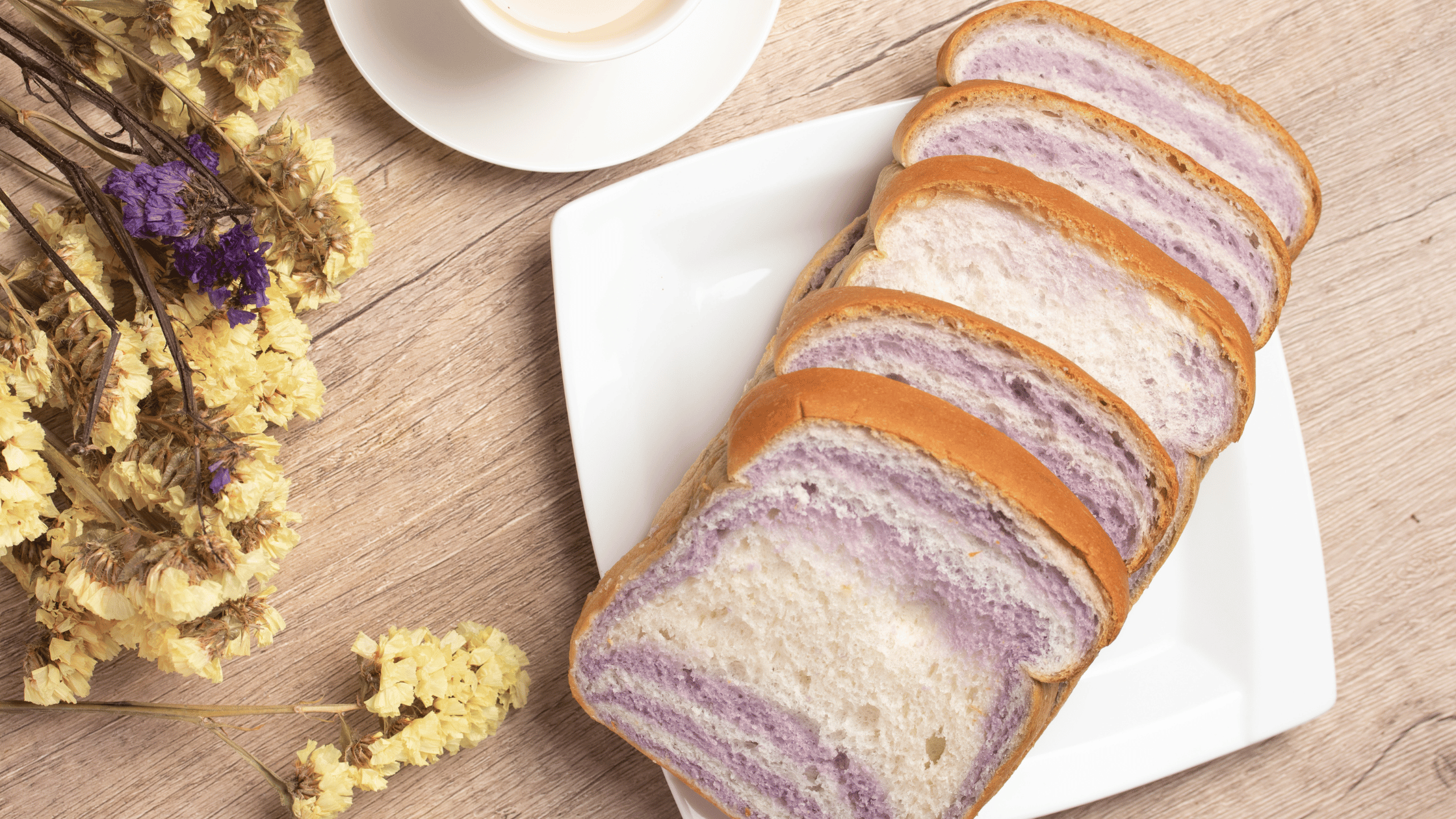Is Taro Gluten Free? Here’s The Ultimate Answer

You must have heard the word “Gluten Free” in many celebrity or influencer interviews. The new Gen Z is all after gluten free diets. However, some people are left with no choice other than going gluten free due to their health conditions.
Now the question is, is Taro gluten free?
Yes, Taro is an amazing gluten free option for gluten free food lovers. It’s a root based vegetable and has been certified as gluten free. If you are thinking of going gluten free then you can start with Taro as your first gluten free food item.
Keep reading as you will get to know more interesting facts about Taro made gluten free food items like Taro Boba, Taro milk, and Taro bread. You will also discover surprising pros and cons of eating Taro.
What Does Gluten Free Mean?
Gluten-free food means it doesn’t have “gluten” in it. Gluten is a type of protein that’s found in some form of grains like wheat, barley, and rye. Gluten-free food items are made without these grains.
When someone says they are gluten free that means they don’t eat particular sorts of grains. People who are living a gluten free life stay away from food sources made with these grains. That means they don’t eat regular bread, pasta, treats, or cakes made with wheat flour. Instead, they pick food sources that are normally gluten free. These kinds of diet charts include organic products, vegetables, rice, and potatoes.
Now you must be thinking, how am I going to survive without indulging in delicious pasta or cakes? Well, there is nothing to worry about because you can opt for gluten-free adaptations of your favorite food or treats. You can still indulge in delectable meals and snacks without gluten.
Celiac disease or gluten sensitivity patients have to consume gluten-free foods. They have to look for gluten free signs before buying food. And that’s why options like Taro are just like a blessing for Gluten free food lovers.
Why Is Taro Gluten Free?
Taro is normally gluten free. It doesn’t contain the proteins that makeup gluten. As I already mentioned, grains like wheat, grain, and rye contain gluten. Taro is a starchy root vegetable. It’s not part of a similar plant family as these gluten containing grains.
So, if you have decided to start a gluten free diet because of health concerns or just a conscious decision, you can enjoy taro without worrying.
Taro is not only gluten free but also a versatile and delicious ingredient to include in your meals. You can make delectable dishes like taro fries, taro chips, or taro-based treats. You can serve these to your gluten free friends and family to win their hearts.
Is Taro Boba Gluten Free?
A boba drink is a yummy source of refreshment that comes with chewy balls called “boba” or “bubble tea pearls” at the base. It’s like a tasty blend of a beverage and a little snack. Although originating in Taiwan, boba beverages have gained enormous popularity all over the world.
If you have never tasted a boba drink, let me help you imagine what it is. You begin by sipping on a tasty flavored beverage, such as fruity tea, milk tea, or even coffee. Then, there are these boba, or little spherical tapioca balls, at the bottom of the beverage. They resemble little gummy bears and are chewy.
You will enjoy both the drink and the boba simultaneously when you sip your boba with a large straw. Every sip is like getting a surprise! The boba balls, which come in several flavors, may give your beverage an additional kick and texture.
Boba drink’s taro powder, tapioca pearls, jasmine green tea, and boba are all naturally gluten-free foods.
Depending on how it’s created, taro boba may or may not be gluten-free. Due to its starchy root vegetable nature and lack of gluten, taro is inherently gluten free. It’s important to double-check the drink’s components when it’s used in boba, though.
For instance, some boba pearls are manufactured using gluten containing wheat flour. Therefore, check the ingredients list if you’re on a gluten-free diet. You can be sure by asking the boba store whether it is gluten free or not.
Is Taro Milk Gluten Free?
As you already know, taro is gluten free. That’s why taro milk is gluten free too. Taro root is typically blended with milk and sweeteners, such as sugar. Sometimes, it’s made with condensed milk, ice, or other flavorings. It is renowned for both its wonderful flavor and purple hue. This drink is popular in many Asian nations. But now, people from all over the world are trying this unique milk option.

Sometimes, people get a little puzzled after seeing the purple color of taro milk tea. But what makes the taro tea turn into purple color? Actually, the taro root itself isn’t purple; it’s kind of beige on the inside. But the purple color in taro bubble tea comes from something called taro powder.
When manufacturers make taro powder for bubble tea, they add food coloring to it during the processing. That’s why it has a cool and catchy purple color that we all love. So, even though the taro itself isn’t naturally purple, the taro powder gives the bubble tea it’s fun and vibrant appearance.
Don’t forget to check if the other ingredients mixed to make taro milk are gluten free or not.
Is Taro Bread Gluten Free?

Yes, it is gluten free. Taro bread is like regular bread. But it’s special because it has taro in it. Taro is a root vegetable with a sweet and nutty flavor. Some also say it is like a potato but a bit sweet.
To make taro bread, bakers blend taro into the bread batter. It gives the bread a special taste and a wonderful purple tone. The taro adds a little sweetness and makes the bread delicate and yummy.
You can eat taro bread as you would eat some other bread. You can make sandwiches with it, toast it, or even spread margarine on it. It’s a unique, tasty twist on the classic bread we all know and love.
Nutrition Facts of Taro
According to USDA, a 100g serving of Taro has the following nutrient elements:
| Nutrient | Amount |
| Energy | 142 kcal |
| Water | 63.8 g |
| Carbohydrate | 34.6 g |
| Fat | 0.11 g |
| Protein | 0.52 g |
| Fibre | 5.1 g |
| Potassium | 484 mg |
| Calcium | 18 mg |
| Sugar | 0.49 g |
| Manganese | 0.449 mg |
| Sodium | 15 mg |
| Vitamin C | 5 mg |
| Vitamin B-6 | 0.331 mg |
| Vitamin K | 1.2 µg |
| Vitamin A | 84 IU |
Benefits Eating of Tarot Root
Let’s discuss the taro root’s wonderful advantages. Did you know that this simple, starchy root can do some really amazing things for your health and wellbeing? It really can! So, here are some benefits of eating Taro roots:
- Vitamin E, potassium, magnesium, and dietary fiber are all present in taro. That’s why it’s an excellent source of vitamins and minerals.
- The dietary fiber present in taro is beneficial to a healthy digestive tract and can help with digestion.
- Taro is a starchy root vegetable. Taro milk has natural sugar in it, which can provide a quick energy boost.
- Taro’s rich potassium content is good for maintaining healthy bones and promotes heart health.
- .Vitamin E and other antioxidants found in taro can help shield cells from the harm of free radicals.
- Taro is a good choice for anyone trying to lose weight or reduce their fat intake because it is naturally low in fat.
- Taro gives you the freedom to cook in different ways. You can fry or bake these or simply add them to other dishes.
- It is a fantastic supply of complex carbs that gives you long-lasting energy without quickly raising your blood sugar.
- Taro root benefits diabetics due to its low glycemic index and high fiber content.
A few Cons of Eating Taro
You must be thinking how on earth such tasty and nutrient dense food items have any disadvantages. Well, unfortunately, there are a few disadvantages of taro, dear reader. Here they are:
- Taro is calorie-dense because it has carbohydrate content. Overeating taro will increase calories in your body.
- It’s a starchy vegetable. That’s why it’s not suitable for people following low carb diets.
- Though it’s rare, it can cause allergic reactions in some people.
- Oxalates present in Taro can contribute to kidney stone formation in individuals susceptible to oxalate-related kidney issues.
- Peeling taro takes some time, and some folks may get skin discomfort if they handle it improperly.
FAQs
Is Taro Mochi Gluten Free?
Mochi is made from glutinous rice, which doesn’t contain gluten. However, the flavorings, fillings, or additional ingredients added to taro mochi sometimes contain gluten. So, you need to make sure that your taro mochi doesn’t have gluten by checking the ingredient list.
Is Taro Nut free?
In general, taro is thought to be nut free. It’s not a nut variety; it’s a starchy root vegetable. However, if nuts are made in the same kitchen or using the same equipment as taro in, there may be a potential for cross-contamination.
Who Should Not Go Gluten Free?
Unless you have celiac disease and gluten allergy, there’s no need for you to go for gluten free diet. The choice is up to you.
How to Recognize Gluten Free Food?
There’s a specific sign for gluten free products. It’s a “Crossed Grain Symbol” to identify gluten free products. It is recognized by Coeliac Organizations Worldwide.
Take Away
In simple terms, taro is a great gluten-free food because it’s a natural, unprocessed root vegetable that doesn’t contain any gluten. It’s a safe and nutritious choice if you need to avoid gluten in your diet. Taro is rich in essential nutrients like fiber, vitamins, and minerals, making it a healthy option for a well-rounded diet. So, if you’re looking for delicious and gluten-free ingredients, taro is a tasty and safe choice to enjoy.





